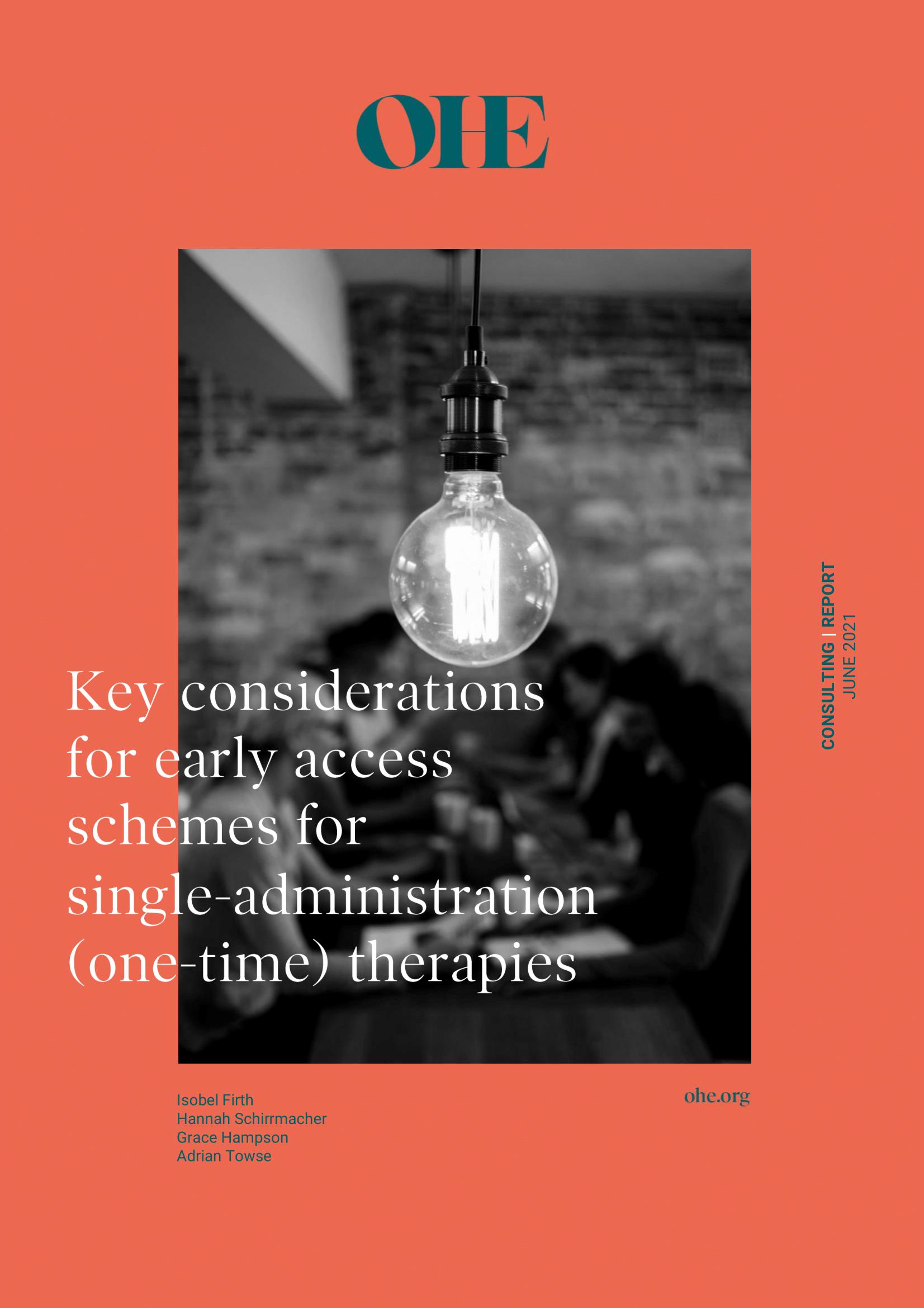Unlocking the Value of Combination Therapies

Early access schemes enable patients in exceptional need to access therapies that are not yet available through their health system. These schemes were not designed for single-administration therapies. In our report, OHE authors present key considerations for developing early access schemes for single-administration therapies.
In our report, OHE authors review the existing routes for early access to medicines and discuss key considerations for how they may need to be adapted for single-administration therapies.
What is the process for approval and access to medicines?
Regulators recommend the authorisation of a medicine where the benefits are judged to be greater than the risks. Following regulatory approval, there are different national pricing and reimbursement processes, which in most cases, must conclude before patients have the opportunity to access treatment.
However, for some patients who have an exceptional need for rapid access, waiting may not be an option. Currently, there are pathways to enable such patients to access therapies in a minority of countries. Where they do exist, early access schemes were designed with chronic therapies (which have to be taken continuously) in mind. These schemes are often less suited to single-administration therapies such as gene therapies. As a result, patients who need early access to these therapies could miss out.

What is different about early access for single-administration therapies?
Single-administration treatments are prime candidates for early access schemes as they often target rare and serious diseases that are without effective treatment options. However, for most early access schemes, manufacturers are required to provide treatment for free. For therapies that are only administered once, there is no prospect for the manufacturer of future reimbursement for the therapy – for that one patient – in the longer term. This may mean early access schemes are financially risky and hence unsustainable for manufacturers of single-administration therapies. Ultimately this could reduce investment in the development of valuable single-administration therapies in the future.
How can early access schemes be improved for single-administration therapies?
The report published today by OHE authors presents important areas for consideration for those designing early access schemes for single-administration therapies. The report is informed by a multi-stakeholder expert roundtable that was attended by 11 experts, including payers, regulators, HTA body representatives, industry body representatives, politicians, ethicists, government representatives and patient advisory groups.
The four ‘key considerations’ for stakeholders are:
1.The initiation and termination of an early access scheme: therapies that qualify for early access should become available through early access schemes as soon as it is deemed safe to do so. Access to therapies through early access schemes should be maintained up to the point where the therapy is routinely available through the health system.
2.Patients and physicians should be consulted early during the design of an early access scheme: it is vital that patients’ views are considered early when designing an early access scheme so that other key considerations are implemented in a way that is acceptable to them.
3.When reimbursement is appropriate, the price should reflect value: many early access schemes do not reimburse the manufacturer for the product supplied during the early access schemes. Where reimbursement is deemed appropriate, the price of the therapy should reflect the value.
4.Data collection should be an integral part of an early access scheme and inform future assessment: early access schemes are an opportunity to generate important data on single-administration therapies.
What are the next steps?
Ultimately, policymakers, manufacturers, regulators, and payers must consider how the design of early access schemes can be improved to ensure they are fit-for-purpose for single-administration therapies.
Further research and discussion are needed to understand how the broad themes covered by the key considerations can be incorporated in the implementation of specific schemes in different national contexts. Barriers to implementation must be identified, and strategies to overcome these put in place.
Acknowledgement: This report was commissioned by Novartis Gene Therapies.
Citation
Firth I., Schirrmacher H., Hampson G., Towse A. Key considerations for early access schemes for one-time therapies., London: Office of Health Economics. Link: https://www.ohe.org/publications/key-considerations-early-access-schemes-single-administration-one-time-therapies
Houÿez, F., Ancochea, A., Baleydier, C., Duboka, D., Fridriksson, F., Kaatee, M., Matthyssen, L., r Jóhannesson, S., Murphy, L., Schwersenz, I., Solis, L., Sproedt, C., Timmis, O., Foltanova, T., Camp, R., Evers, P. and Fitzpatrick, Z., 2017. Early Access to Medicines in Europe: Compassionate Use to Become a Reality. EURORDIS, p.26
Key Considerations for Early Access Schemes for Single-Administration (One-Time) Therapies
